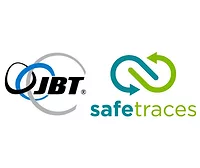Advancing Food Safety with Technology and Traceability

Today, consumers are accustomed to having up-to-the minute information available at their fingertips. Not only do we investigate everything prior to purchasing, we track everything digitally so we know exactly where it is and when it will arrive. We know a new pair of faux-leather shoes manufactured under environmentally friendly and ethical circumstances is going to arrive just in time for an important event, for example.
These modern conveniences have become commonplace in a relatively short amount of time—so what’s holding our food supply chain back from similar progress?
In order to shift the food supply chain toward this new era of digital connectivity, it’s important to first understand in the opportunities to transform how data are collected and transmitted. The timing is more critical than ever since the U.S. Food and Drug Adminsitration recently announced its intentions to modernize the supply chain with the New Era of Smarter Food Safety, which encourages taking advantage of technology to enhance food safety. Two collaborative food industry initiatives—the Foodservice GS1 US Standards Initiative and the GS1 US Retail Grocery Initiative—composed of manufacturing companies, distributors, wholesalers, retailers, foodservice operators, and technology providers are working to overcome food traceability obstacles using GS1 Standards, a common global language that all systems can understand.
The following is an overview of how the industry is using standards as a springboard for traceability progress. There are three critical components of standards-based traceability: identifying products, capturing information about them, and sharing them with external trading partners.
Identify
As this traceability infographic shows, good traceability processes start at the source. Assigning unique identifiers called Global Trade Item Numbers (GTINs) to the food sourced the first step to making it visible in the supply chain. Often referred to as the backbone of commerce, GTINs can be recognized in all trading partner systems, even across geographic boundaries. They are what other supply chain partners rely on to trace a product, especially in the event of a recall or withdrawal. The uniqueness of this identifier is particularly critical, as it connects a product to the brand that is growing processing or manufacturing it.
Similarly, unique location, a Global Location Number (GLN) is used for supply chain partner locations such as a farm or field, a packing house, manufacturing plant, wholesaler’s facility, distributor’s loading dock, a store, or a restaurant location. They help a company record each stop a product has made in the supply chain and are also a core component of an effective traceability program.
The two GS1 US initiatives continue to educate all levels of the supply chain about the value of adopting and using standards for identification over using their own proprietary numbering systems for product and location. Identification standards like GTINs and GLNs contribute to the overall interoperability between systems, which helps us all get closer to that ideal state of conducting recalls with the ease of a “track my package” function.
Capture
If the GTIN is the backbone of traceability, barcodes are like the muscles, as they put identifiers into motion. They are the key point where the flow of information is connected to the flow of the product. GTINs and other dynamic product information such as batch number, lot number, and expiration date are encoded into specialized barcodes called GS1-128s, which are being more widely adopted at the case level for traceability. When all trading partners are scanning these from stop to stop, the entire supply chain can be confident about where a particular product is. If no one is scanning the barcodes and a recall investigation is launched, the trail immediately goes cold.
The case-level barcodes aid traceability Not only do they capture master data—that is, the GTIN but also key transactional data—the information that confirms the execution of a business process such as loading, unloading, or time of production.
Saladino’s Foodservice, an independently owned foodservice distributor in California, is a great example of a food company that is leveraging GS1 Standards in their supply chain. Having case level traceability was required by a foodservice operator so Saladino’s adopted GS1-128 barcodes. They implemented the capabilities to scan GS1-128 barcodes upon receipt into their distribution centers and at delivery to their customers, resulting in improved supply chain visibility. Leveraging standards even further, Saladino’s also integrated better data quality practices, including physical product audits to ensure all product matches their system data. This was used to fill any gaps in product data from their suppliers.
Share
Another standard that contributes to a safer, more transparent supply chain is the Global Data Synchronization Network™ (GDSN), which enables companies to globally share trusted product data all at once with all of their trading partners. This automatic and efficient exchange helps in meeting new consumer demand for accurate, complete, and consistent product information and is more efficient than sharing data manually or through several individual portals.
There is also a strong interest in the food industry to adopt blockchain, which can be used to create immutable records to more fully trace a product. However, according to recent research from Gartner, industry is confused about how blockchain can be used effectively for traceability. They maintain that most blockchain pilot projects don’t move forward to implementation partly due to a lack of standards. There is a continuing opportunity to lay a proper foundation for such technological advances through standards-based data sharing. Excelling at supply chain visibility is still the necessary first step toward effective digital transformation.
Ultimately, adopting standards indicates a company’s proclivity to automate their supply chain, and therefore, drive out errors and wasted labor associated with manual data entry. The supply chain industry must work to modernize and adapt to this new normal by prioritizing standards-based collaboration for a more proactive and transparent food supply chain that aligns with the demands of the consumer.
Angela Fernandez is vice president of Community Engagement at GS1 US.
Looking for quick answers on food safety topics?
Try Ask FSM, our new smart AI search tool.
Ask FSM →








